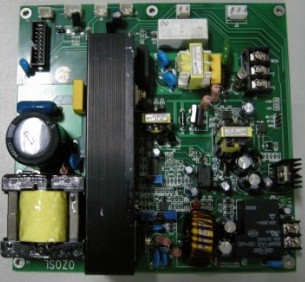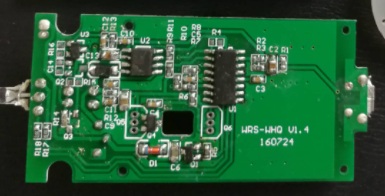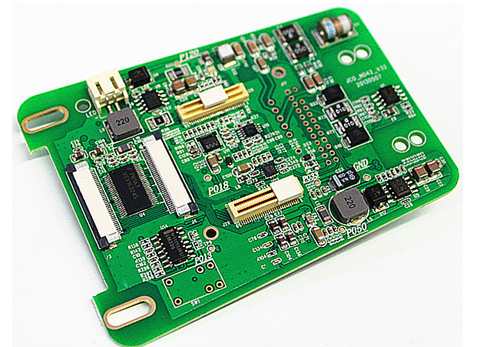
In high-speed PCB design, many Chinese engineers are puzzled by the characteristic impedance of controllable PCB impedance board and circuit. This paper introduces the basic properties, calculation and measurement methods of characteristic impedance through a simple and intuitive method.
In the design of high-speed PCB, the characteristic impedance of controllable impedance board and circuit is one of the most important and common problems. First of all, let's understand the definition of transmission line: transmission line is composed of two conductors with a certain length. One conductor is used to send signals, and the other is used to receive signals (remember that the concept of "loop" replaces "ground"). In a multilayer board, each line is a part of the transmission line, and the adjacent reference plane can be used as the second line or loop. The key for a line to become a "good performance" transmission line is to keep its characteristic impedance constant throughout the line.
The key to becoming a "controllable impedance board" is to make the characteristic impedance of all circuits meet a specified value, usually between 25 ohms and 70 ohms. In multilayer circuit boards, the key to good transmission linearity of PCB is to keep its characteristic impedance constant throughout the circuit.

But what is the characteristic impedance? The simplest way to understand the characteristic impedance is to see what the signal encounters during transmission. When moving along a transmission line with the same cross section, this is similar to microwave transmission. Suppose that a 1-volt voltage step wave is added to this transmission line. For example, a 1-volt battery is connected to the front end of the transmission line (it is located between the transmission line and the loop). Once connected, this voltage wave signal travels along the line at the speed of light, and its speed is usually about 6 inches/nanosecond. Of course, this signal is really the voltage difference between the transmission line and the loop, which can be measured from any point of the transmission line and the adjacent point of the loop
Zen's method is to "generate a signal" and then travel along this transmission line at a speed of 6 inches/nanosecond. The first 0.01 nanoseconds advance 0.06 inches. At this time, the sending line has redundant positive charges, while the loop has redundant negative charges. It is the difference between these two charges that maintains the 1 volt voltage difference between the two conductors, which in turn forms a capacitor.
In the next 0.01 nanosecond, adjust the voltage of a 0.06 inch transmission line from 0 to 1 volt. This requires adding some positive charges to the transmission line and some negative charges to the receiving line. For every 0.06 inch of movement, more positive charges must be added to the transmission line and more negative charges must be added to the circuit. Every 0.01 nanoseconds, another section of the transmission line must be charged, and then the signal begins to travel along this section. The charge comes from the battery at the front of the transmission line. When moving along this line, it charges the continuous part of the transmission line, thus forming a voltage difference of 1 volt between the transmission line and the loop. Every 0.01 nanoseconds forward, some charge (± Q) is obtained from the battery. The constant electric quantity (± Q) flowing from the battery within a constant time interval (± t) is a constant current. The negative current flowing into the loop is actually equal to the positive current flowing out, and it is just at the front end of the signal wave. The AC current passes through the capacitor composed of the upper and lower lines to end the whole cycle.
Line impedance
For the battery, when the signal travels along the transmission line, and the transmission line segment is charged continuously for 0.06 inches every 0.01 nanoseconds. When a constant current is obtained from the power supply, the transmission line looks like an impedance device, and its impedance value is constant, which can be called the "surge impedance" of the transmission line.
Similarly, when the signal travels along the PCB circuit, which current can increase the voltage of this step to 1 volt within 0.01 nanoseconds before the next step? This involves the concept of instantaneous impedance.
From the perspective of the battery, if the signal travels along the transmission line at a stable speed and the transmission line has the same cross section, then the same amount of charge is further required every time in 0.01 nanoseconds to generate the same signal voltage. When moving along this line, the same instantaneous impedance will be generated, which is regarded as a characteristic of the transmission line and is called the characteristic impedance. If the characteristic impedance of the signal is the same at each step of the transmission process, the transmission line can be considered as a controllable impedance transmission line.
Instantaneous impedance or characteristic impedance is very important to the quality of signal transmission. In the transmission process, if the impedance of the next step is equal to the impedance of the previous step, the work can proceed smoothly, but if the impedance changes, some problems will occur.
In order to achieve the best signal quality, the design goal of the internal connection is to keep the impedance stable as much as possible during the signal transmission process. First, the stability of the characteristic impedance of the transmission line must be maintained. Therefore, the production of the controllable PCB impedance board becomes more and more important. In addition, other methods such as minimization of residual line length, terminal removal and full line use are also used to maintain the stability of instantaneous impedance in signal transmission.
Calculation of characteristic impedance
Simple characteristic impedance model: Z=V/I, Z represents the impedance of each step in the signal transmission process, V represents the voltage when the signal enters the transmission line, and I represents the current. I=± Q/± t, where Q represents electric quantity and t represents time of each step.
Power (from battery): ± Q=± C × 5. C represents capacitance and V represents voltage. The capacitance can be derived from the capacity CL per unit length of transmission line and the signal transmission speed v. The length of the unit pin is taken as the speed and multiplied by the time t required for each step to obtain the formula: ± C=CL × v × (±) t. Combining the above items, we can get the characteristic impedance: Z=V/I=V/(± Q/± t)=V/(± C × V/±t)=V/(CL × v × (±)t × V/±t)=1/(CL × v)
It can be seen that the characteristic impedance is related to the capacity per unit length of the transmission line and the signal transmission speed. To distinguish the characteristic impedance from the actual impedance Z, we add 0 after Z. The characteristic impedance of the transmission line is: Z0=1/(CL × v)
If the capacity per unit length and signal transmission speed of the transmission line remain unchanged, then the characteristic impedance of the transmission line also remains unchanged. This simple explanation can link the common sense of capacitance with the newly discovered characteristic impedance theory. If the capacity per unit length of the transmission line is increased, such as the transmission line is thickened, the characteristic impedance of the transmission line can be reduced.
Characteristic PCB impedance measurement
When the battery is connected to the transmission line (if the impedance at that time is 50 ohms), connect the ohmmeter to the RG58 cable with a length of 3 feet. How to measure the infinite impedance? The impedance of any transmission line is time dependent. If you measure the PCB impedance of the optical cable in a shorter time than the reflection time of the optical cable, what you measure is the "surge" impedance, or characteristic circuit boards impedance. However, if you wait for a long enough time until the energy is reflected back and received, you can find that the impedance changes after measurement. Generally speaking, the impedance value will reach a stable limit value after bouncing up and down.






